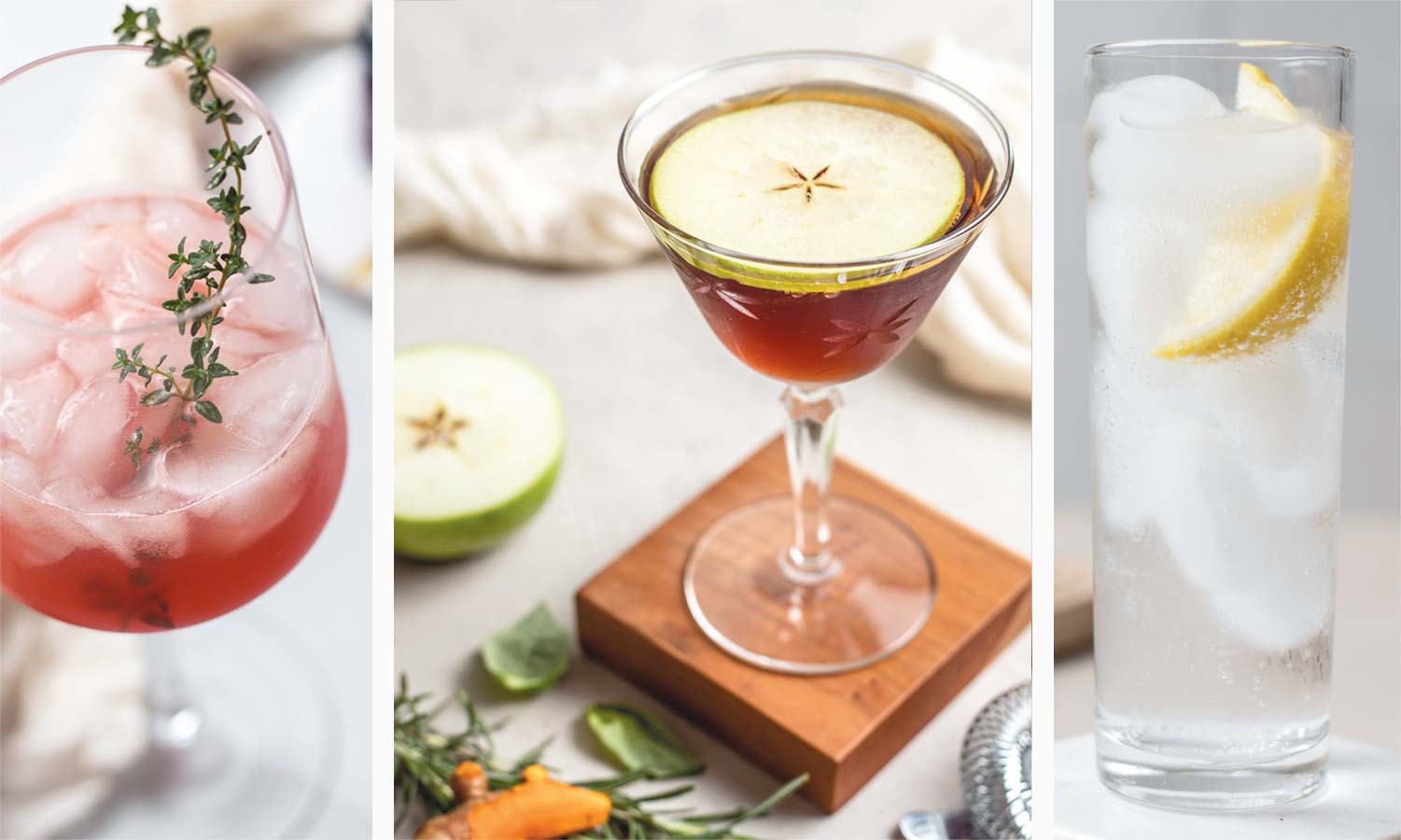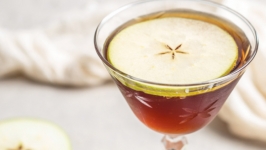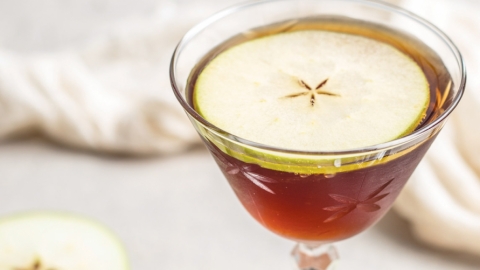Aperitifs and Digestifs are Becoming Philly’s New Libation of Choice — For Good Reason
PICTURE AN EVENING in Florence, Italy. Before dinner, you walk across the Ponte Vecchio—an enchanting 14th-century bridge—over the Arno River to meet a friend or two at an enoteca for a drink. Your party sits at an outside table that’s a bit wobbly on the ancient cobblestones. When the server appears, you order an Aperol Spritz, a Negroni, or perhaps a simple glass of prosecco.
What you don’t do is ask the server about the happy hour specials because this isn’t happy hour. It’s aperitivo hour. During aperitivo hour, there is no elbowing at the bar to grab the bartender’s attention just to order a drink that’s $2 off and some half-price nachos.
The Italian tradition of aperitivo hour— which usually occurs between 7 and 9pm—is not a frenzied stop off on your way home from work. It’s a relaxed occasion, and one of its purposes is to open the palate and prepare the stomach for digestion of a meal that might not begin until 9pm or later. Traditionally, there’s little food served during this convivial time, but you might receive a small trio of snacks to accompany your drink: some perfectly crispy potato chips, a handful of olives, maybe some nuts.
The drinks most often ordered during aperitivo hour are aperitifs (hence the name). They are frequently, but not always, low-ABV [alcohol by volume] with some bitter botanical component.
PHILLY’S APERITIF AND DIGESTIF TRADITION
While the aperitivo hour is an Italian tradition, many cultures craft botanical beverages that serve the same purpose as an aperitif. In France, Lillet, combining wine and a blend of fruits, barks, and peels, is a popular aperitif. Bjork, made from the bark of birch trees, is enjoyed as an aperitif in Sweden.
In Spain, vermouth is often the pre-dinner drink of choice, and quality vermouth is increasingly popular at Philadelphia restaurants. At Bloomsday in Headhouse Square, there’s a wide variety of vermouths on the menu, and the restaurant partners with Vox Vineti Winery in Christiana to produce Dumpster Juice vermouth made with botanicals sourced from Pennsylvania farms such as Three Springs Fruit Farm in Aspers and Green Meadow Farm in Gap. Next year, Bloomsday will open its own production facility, Fell to Earth, to produce the vermouth. The location has yet to be announced.
In general terms, vermouth is a fortified wine enhanced with spices and botanicals, and Bloomsday has taken theirs to a new level, using seasonal and local ingredients to craft its extensive line.
“We generally have about 10 vermouths at any given time,” says Tim Kweeder, Bloomsday’s manager. “A good way for people to dive in is to get a flight. When customers find one they enjoy, they can then order a full pour.”
While people often order meals to pair with their vermouth, Bloomsday also gives customers the option to order “gilda,” a little snack to go along with the drink. Gilda (the G is pronounced as an H) is popular in Spain’s Basque Country. The snack served is sometimes anchovy on a skewer.
“We right away figured garnishing with an anchovy might get a backlash,” says Kweeder, so the restaurant creates its own versions of gilda that change seasonally. In late summer, one of the options was Three Springs Fruit Farm cherries marinated in Love City Stout.
At Cicala in Philadelphia’s The Divine Lorraine, the bar menu is full of the aperitif’s late-night counterpart, the digestif, another Italian tradition. A digestif, as its names suggests, is meant to aid in digestion. It’s served at the end of a meal, usually after coffee or espresso but sometimes alongside it. A bitter digestif, often an amaro, helps to settle the stomach and get the digestive juices flowing.
“We have over 40 different amari on the menu,” says Joe Cicala, chef owner of the restaurant whose passion is amaro. “Mostly, the list is on the herbal bitter side.”
The restaurant’s list was created when it first opened in 2019 with the help of a Sicilian sommelier, even though Cicala wasn’t certain if there would be a demand for extensive digestif offerings.
“Let’s just go with it and see how it goes,” Cicala thought at the time. Customers now come just for the amari.
“We have avid amaro drinkers that know we have this list. They love to talk to the somm and the bartender. On the weekends, we often have Italians who come in and love to see that we carry an amaro from their region,” says Cicala.
THE SCIENCE BEHIND THE DRINKS
How do amaro, vermouth, and other bitter drinks aid in digestion?
Linda Shanahan is a registered nurse who also has formal herbal training. Together with her husband, Eric, she owns the certified organic herb farm Bluestem Botanicals in Doylestown.
“Traditional practices like aperitif are completely supported by modern science,” says Shanahan, who explains how the body goes into action when tastes receptors identify bitter. “It creates a chain reaction in which hydrochloric acid is secreted in the stomach, digestive enzymes are secreted in the small intestine, and the accessory organs such as the pancreas and liver further the process with secretion of insulin and bile.”
In addition to aiding in digestion, bile is antimicrobial.
“What you put in your mouth risks exposure to pathogens,” says Shanahan. By ingesting bitters and setting off the chain reaction, you may just be avoiding some unpleasant stomach issues a few hours after you eat.
“You don’t need much,” she says. “A small aperitif or digestif can support digestion.”
At Bluestem, local bartenders attend classes to learn how to use the botanical herbs grown on the farm—herbs like wormwood, hibiscus, mint, chamomile, and many others—in cocktail creation.
One of them is Rebecca Cowen, a bartender and self-proclaimed botanical geek. Cowen consults on bar menus, specializing in botanical and nonalcoholic ingredients. She also collaborates with Bluestem, creating cocktail recipes from their farm ingredients and instructional videos for their popular Crafted Garden to Glass Cocktail Subscription Kits.
“What I like about botanicals, there are benefits to certain ones,” says Cowen. “Take chamomile. Most people know it as a tea that promotes sleep. But it’s found in Hendrick’s Gin. There’s a grappa that uses chamomile. It’s anti-inflammatory, antiseptic, and it’s great for digestion.”
Recently, she’s noticed an increase on bar menus in the Philadelphia region of drinks that would be considered aperitifs and digestifs, even if they aren’t labeled that way.
“Everyone has a Negroni, a Manhattan, an Old Fashioned. They all contain a bitter component. In the case of the Negroni, you have both bitter and botanical there,” Cowan says.
She sees this botanical drink trend as an extension of the classic cocktail trend of the past decade or so.
“There’s definitely a movement,” Cowan says. “People are mindful about what they’re consuming. Mindful about their health. Trying to make the right decisions. If you can incorporate health and nature into your cocktail, then enjoy your dinner and have something that settles and soothes your stomach if you indulged too much, I think we’re seeing more of that.”
ENJOYING APERITIFS AND DIGESTIFS AT HOME
You don’t have to go to Italy, Spain, or a Philadelphia restaurant or bar to join the aperitif/ digestif movement.
To enjoy vermouth at home, Tim Kweeder of Bloomsday, suggests serving three ounces in a rocks glass about ¾ full of ice. A little dilution is helpful, particularly if the vermouth is sweet. To lower the alcohol level, try mixing vermouth with tonic. Classic snacks to serve with vermouth include potato chips, olives and other briny foods, pickles, tinned fish, cured meats, and smoked cheeses.
A standard pour of amaro is about one ounce, and it’s usually served neat (unchilled). When enjoying amaro at home as an aperitif pair it with salty toasted nuts, olives, and fried foods as well as cured meats and cheese, recommends Joe Cicala of The Divine Lorraine’s Cicala.
When enjoyed as a digestif, amaro is’ usually served on its own. One exception, says Cicala, is building an amaro affogato. Traditional affogato is a shot of espresso poured over a scoop of vanilla gelato. Substitute an amaro for espresso, and it’s a tasty end to a meal.
RECOMMENDATIONS:
Locally Produced Aperitifs and Digestifs
Vermouth and amaro are common aperitifs and digestifs, but they’re not the only ones. These locally crafted choices are perfect for your at-home aperitivo hours or after-dinner drinking pleasure.
Vigo Amaro
Made by Philadelphia Distilling, this approachable amaro is perfect as a digestif, or mix it with a local dry sparkling cider for a Keystone State version of a spritz for an aperitif.
Walnut Nocino
Made by New Liberty Distilling, this walnut liqueur has the botanicals and bitter notes that make it a fitting way to end a meal or replace half the whiskey in a Manhattan with nocino for an aperitif.
Revolutionary Vermouth
Made by Stone Y Key Cellars in collaboration with Philadelphia Distilling, this semi-dry vermouth is infused with 13 different botanicals.
Chaddsford Winery Sparkling White
A blend of Vidal Blanc and Seyval Blanc grapes, this slightly sweet bubbly works as an aperitif just as prosecco does.











